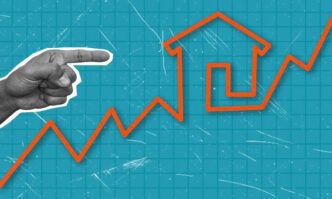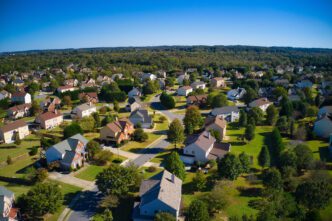For aspiring real estate investors, the path to building a substantial property portfolio often begins with a single, powerful concept: leverage. This financial strategy is what allows individuals to control and profit from assets worth significantly more than their available cash, transforming a modest down payment into the cornerstone of a real-to-life property empire. By strategically using borrowed capital, primarily from lenders, investors can accelerate wealth creation, magnify returns on their cash, and scale their holdings in residential and commercial markets at a pace that would be impossible with cash alone, making it the fundamental engine of real estate growth.
What is Real Estate Leverage?
At its core, real estate leverage is the use of borrowed funds to increase the potential return of an investment. In the simplest terms, it means using “Other People’s Money” (OPM) to purchase a property. While you provide a fraction of the total cost as a down payment, a lender—typically a bank—provides the rest, allowing you to control 100% of a valuable asset.
Consider a straightforward example. If you have $50,000 in cash, you could purchase a small parcel of land for that exact amount. If that land appreciates by 5% in a year, its value increases to $52,500, netting you a $2,500 profit. This represents a 5% return on your investment.
Now, let’s apply leverage. Instead of buying the land, you use that same $50,000 as a 20% down payment on a $250,000 rental property. You now control a quarter-million-dollar asset. If that property also appreciates by 5% in one year, its value rises to $262,500. Your gain is $12,500, and because you only invested $50,000 of your own money, your cash-on-cash return is a staggering 25%.
This magnification of returns is the primary allure of leverage. It allows your investment capital to work much harder for you, generating disproportionately large gains from relatively small market movements. This principle is what separates slow, linear wealth accumulation from the exponential growth potential that defines a real estate empire.
The Mechanics of Leverage in Action
While the concept is simple, its application can take several forms. Understanding the different mechanisms for leveraging capital is crucial for any investor looking to scale their operations effectively and sustainably.
The Traditional Mortgage
The most common and accessible form of leverage is the conventional mortgage. For owner-occupants, programs from the FHA or VA allow for very low down payments, sometimes as little as 3.5% or even 0%. For pure investors, a 20-25% down payment is the industry standard to secure a loan for a rental property.
The genius of leveraging a rental property is that, when structured correctly, your tenant effectively pays off your debt for you. The monthly rent should be calculated to cover the mortgage principal and interest, property taxes, and insurance—collectively known as PITI. Ideally, the rent also covers maintenance, vacancy reserves, and still leaves a profit, known as positive cash flow.
The BRRRR Method: A Powerful Leverage Strategy
For investors focused on rapid growth, the BRRRR method has become a go-to strategy. This acronym outlines a cyclical process that uses leverage to build a portfolio with minimal long-term capital tied up.
- Buy: The process starts with purchasing a distressed or undervalued property that requires improvements. This is often done with a short-term loan or cash.
- Rehab: You then renovate the property to increase its market value. This is known as “forced appreciation” because you are not waiting for the market to rise; you are actively increasing the asset’s worth.
- Rent: Once the renovation is complete, you place a qualified tenant in the property, establishing a consistent income stream.
- Refinance: With a tenant in place and the property’s value increased, you approach a lender for a long-term, cash-out refinance. The new loan is based on the new, higher appraised value, not your original purchase price.
- Repeat: The cash-out refinance pays off the original purchase loan and, crucially, returns your initial down payment and renovation costs to you. You can then use this same capital to acquire the next property, repeating the cycle.
The BRRRR method is the ultimate expression of leverage, as it allows you to recycle the same pool of investment capital over and over again to acquire multiple income-producing assets.
Other Forms of Leverage
Beyond traditional mortgages, savvy investors utilize other sources of capital. Private money lenders—often wealthy individuals or groups—offer loans with more flexible terms than banks, though typically at higher interest rates. Hard money lenders provide short-term, asset-based loans ideal for quick flips or the “Buy” and “Rehab” phases of a BRRRR deal. Seller financing, where the property owner acts as the bank, is another creative option that can eliminate the need for a traditional lender entirely.
The Double-Edged Sword: Understanding the Risks of Leverage
For all its power, leverage must be handled with extreme caution. It is a tool that magnifies outcomes in both directions. While it can accelerate wealth, it can just as easily amplify financial distress if not managed with discipline and foresight.
Magnified Losses
The same math that creates a 25% return on a 5% gain works in reverse. Using our earlier example, if your $250,000 property declines in value by 5%, it is now worth $237,500. While the asset has only lost $12,500, that represents a 25% loss of your initial $50,000 cash investment. Furthermore, you are now “underwater,” meaning you owe more on the mortgage than the property is worth, making it difficult to sell without bringing cash to the closing table.
The Burden of Debt
Leverage is, by definition, debt. The mortgage payment is due every month, without exception. A prolonged vacancy, an unexpected and costly repair like a new roof or foundation issue, or a tenant who defaults on rent can quickly turn a profitable asset into a cash-draining liability. Without sufficient reserves, an investor can face a liquidity crisis, forced to cover mortgage payments out-of-pocket or risk foreclosure.
Interest Rate and Market Risk
Investors using adjustable-rate mortgages (ARMs) are exposed to interest rate risk. A sudden spike in rates can cause monthly payments to balloon, potentially wiping out cash flow and turning a good investment into a bad one. Broader market downturns can also depress rental demand and property values simultaneously, creating a perfect storm of lower income and declining asset value.
Building Your Empire Safely: Principles for Smart Leverage
The difference between a property empire and a house of cards lies in risk management. Successful investors adhere to a strict set of principles to harness the power of leverage while mitigating its dangers.
Maintain Strong Cash Reserves
Never operate without a safety net. A widely accepted rule of thumb is to hold cash reserves equivalent to at least six months of PITI for each property in your portfolio. This fund is your buffer against vacancies, unexpected repairs, and other financial shocks, ensuring you can always meet your debt obligations.
Focus on Cash Flow First
While appreciation is a welcome bonus, it should not be the primary basis of an investment decision. A sound investment must generate positive cash flow from day one, after accounting for all expenses. This monthly profit is your first line of defense and the true measure of a property’s performance.
Conduct Meticulous Due Diligence
The old real estate adage, “You make your money when you buy,” is paramount when using leverage. This means exhaustively researching the market, analyzing comparable sales, getting professional inspections, and creating conservative estimates for repair costs and potential rental income. A mistake in your initial calculations can have magnified negative consequences down the line.
Scale Intelligently
Building an empire is a marathon, not a sprint. Avoid the temptation to over-leverage by taking on too much debt too quickly. Start with a single property, learn the process intimately, stabilize the asset, and build your confidence and systems. Only then should you use your proven model to scale to the next property, ensuring each new acquisition rests on a solid financial foundation.
Ultimately, real estate leverage is one of the most potent wealth-building tools available to the average person. It provides a clear pathway to acquiring significant assets and generating passive income. However, it demands respect. By understanding its mechanics, acknowledging its risks, and adhering to disciplined principles of cash flow and risk management, investors can safely use it to transform a small seed of capital into a lasting property empire.








